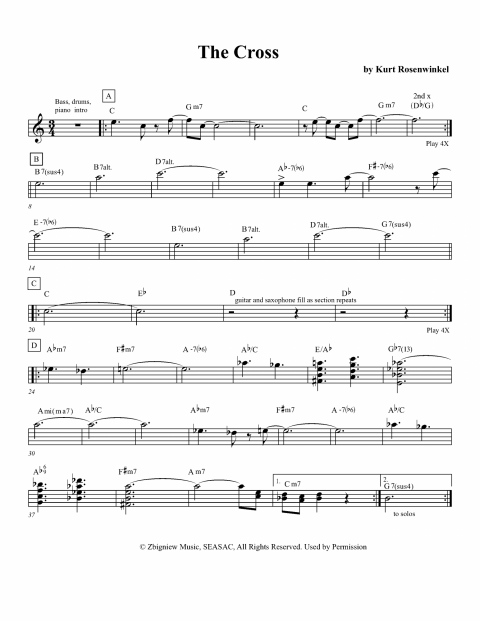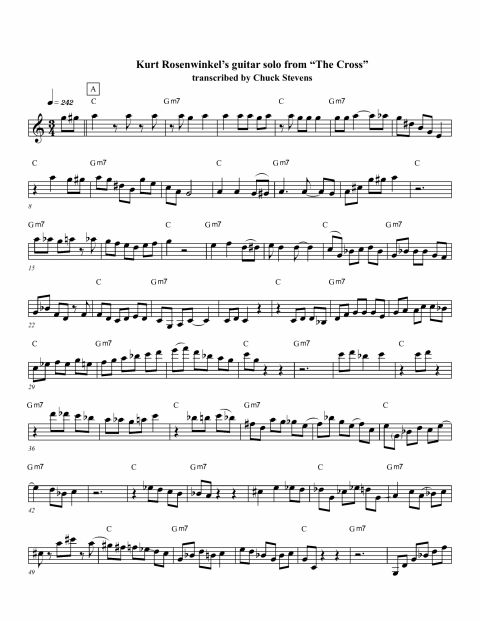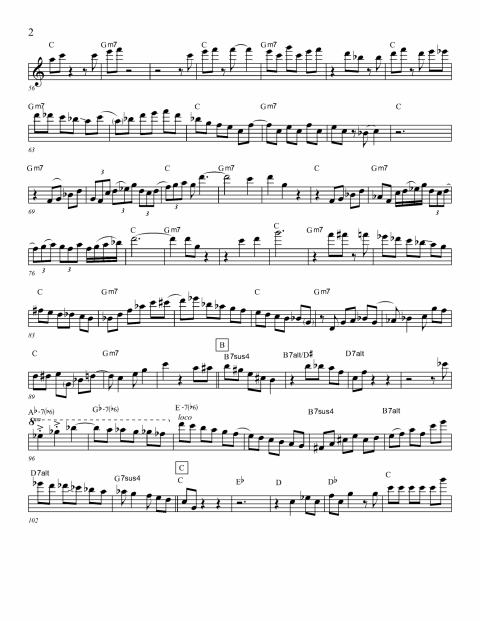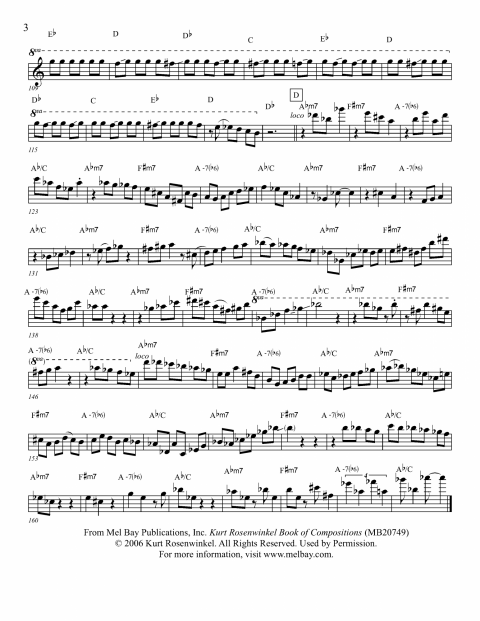A Look at Rosenwinkel’s Style

Kurt Rosenwinkel '90
The forthcoming book from Mel Bay Publications, Kurt Rosenwinkel Book of Compositions, contains 14 pieces by the guitarist and seven guitar solo transcriptions, providing a glimpse of Rosenwinkel’s approach to composition and improvisation.
“The Cross,” from Rosenwinkel’s Deep Song CD (Verve B0003928-02), is provided on page 14 in lead sheet format and with a transcription of Rosenwinkel’s solo courtesy of Mel Bay Publications. The track may be heard at www.berklee.edu/bt182/lesson.html courtesy of the Verve Music Group.
“The Cross” begins with a 30-second Latin-flavored vamp in 3/4 played by bassist Larry Grenadier and drummer Jeff Ballard. Pianist Brad Mehldau enters a few bars before Joshua Redman and Rosenwinkel play the melody together.
For this tune, Rosenwinkel has constructed alternating long and short sections. For sections A and C, Rosenwinkel wrote chord progressions (four and six bars in length, respectively) that are played four times each. The shorter B and D sections are more harmonically active. Some of the chord types in these sections go beyond the harmonic language typically found in standards. Of note are the minor-seventh chords with the flatted-sixth degree and his use of the inversions Ab/C and E/Ab (the latter is the enharmonic equivalent of an E chord with the third in the bass). As well, the root motions of the chords depart from traditional jazz practices.
Of his writing process, Rosenwinkel says, “I play until I find something that I can develop. It usually starts with a chord progression. Some of the things that end up in my music can’t be accurately described with chord symbols. It’s about the voice leading from one specific voicing to another. Some times chord symbols can’t really represent what’s going on.”

Kurt Rosenwinkel '90
For the structure of the solo sections, Rosenwinkel gives Redman and himself room to stretch out. The A section is expanded to 90 bars of C to g minor. Rosenwinkel also simplified the chord progression of the D section and created a repeating four-bar vamp from the first four chords. The chord progressions for sections B and C are the same as those in the head.
Regarding note choices in his solo, Rosenwinkel plays inside and outside the C to g minor vamp, adding more chromatic notes after bar 36. He digs into the changes pretty consistently in sections B and D.
Guitaristically, Rosenwinkel is comfortable articulating the notes with the pick and adding slurs and glissandos for variety.
“When I practice, I pick every note so that I will be able to do that if I want to,” he says. For inflection and phrasing in my solos, I’ll do a mixture of both.” Throughout, the solo, Rosenwinkel plays with control, rhythmic agility, and a sensibility for shaping his lines and the overall contour of his solo.
Visit www.berklee.edu/bt182/lesson.html to hear Kurt Rosenwinkel’s “The Cross”

Lead sheet

Solo Part1

Solo P2

Solo P3




